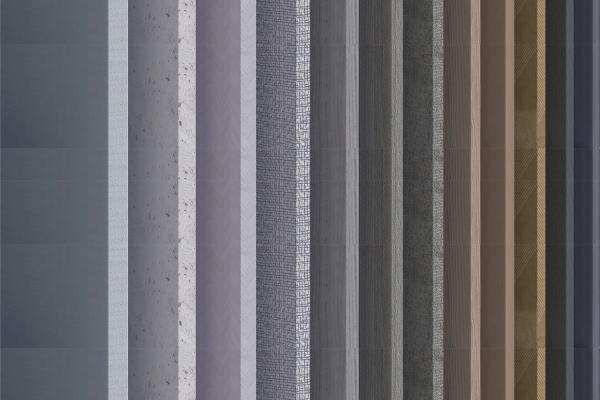Wood must be one of humanity’s oldest natural resources. It has helped keep us safe, comfortable and warm for millions of years
51 Weird and Wonderful Facts About Wood
مشاركة
الصورة

- Wood is made up of a combination of living, dying, and dead cells.
- The world’s shortest tree is the dwarf willow, which lives in northerly and Arctic Tundra regions and rarely grows more than a couple of inches high.
- The tallest trees can grow as high as 100m, more than 320 feet. They include the Coast Redwood, Giant Sequoia, Sitka Spruce and Australian Mountain Ash.
- The world’s tallest living standing hardwood tree is a mountain ash called Centurion in Tasmania. It’s about 329 feet 8 3/4 inches high.
- Trees never die of old age. Insects, diseases and people are usually the killers.
- The mighty Giant Sequoia is thought by many to be the biggest living organism in the world, although a 2,400 acre fungus mycelium in eastern Oregon – almost ten square kilometres of it – is a strong if less-visible contender.
- The world is home to more than 23,000 different kinds of trees.
- The terms softwood and hardwood describe the leaves, seeds and structure of the trees rather than the type of wood they produce.
- Redwood bark can be as much as two feet thick.
- City trees tend to live for an average of 13 years less than country trees.
- The Amazon Basin is the biggest area of tropical forest on earth, a whopping eight and a half million acres.
- The plane tree, common in London’s streets, is excellent at absorbing pollution and sheds its bark regularly so it can absorb more.
- Just one tree can absorb as much as 48 pounds of carbon dioxide a year and can sequester a ton of CO2 safely by the time it’s 40 years old, which is why they’re so important in the battle against climate change.
- Balsa is actually a hardwood!
- Every US state has its own official tree.
- Softwoods are not always softer than hardwoods.
- White oak is the easiest wood to bend using steam.
- Buddha experienced enlightenment under the wisdom tree. And ancient British graveyards often contain a yew tree, planted by pagan worshippers before the Christians took over and built churches on the same plots.
- The Osage Orange tree’s wood generates the most heat when burned.
- The tree with the widest diameter trunk is the African Baobab, just under 50 feet across with a 155 foot circumference.
- Kingley Vale in West Sussex contains a host of ancient yew trees, some of which are more than 2000 years old.
- The tree called “General Sherman” is not only the biggest giant sequoia, but it is also the biggest tree in the world. He is 83.8 m (274.9 feet) tall, his girth at breast height is 24,10 m (79 feet) (near the ground it is 31,3 m or 102,6 feet).
- Oak woodland was the most common vegetation in Britain before humans got their hands on it.
- British oak trees can live for 500 years. We’d have a lot more of them if Henry VIII hadn’t cut almost all of down to build warships.
- The world’s heaviest wood is Australian Bauhinia Red.
- The bark of the Cork oak is used for bottle corks and cork flooring.
- Some bristlecone pines are thought to be more than 5000 years old. But the famous lime tree at Westonbirt Arboretum in Gloucestershire is probably nearer 6000 years old, and The Fortingall Yew in Perthshire could be as old as 9000.
- Softwoods come from gymnosperm trees (evergreens), while hardwoods come from angiosperm trees (deciduous types).
- Softwoods don’t have vessels like harder woods. Their cells are open, and are used to feed water and bring nutrients to the tree.
- Because softwoods take wood finishes so well, they were responsible for the pine furniture boom of the early 80’s to late 90’s.
- Trees trap 50% of all the sun’s energy caught by living organisms.
- All wood is biodegradable.
- Wet wood, unlike dry wood, can conduct electricity.
- The world’s blackest wood is ebony, the world’s whitest wood is holly.
- Lignin is what makes a wood hard. Softwoods have less of it, hardwoods contain more.
- The heaviest American wood is Lignum Vitae Holywood, particularly rich in Lignin.
- Softwoods are usually a lighter colour than hardwoods.
- Pine is denser than some hardwoods so is an affordable alternative.
- Softwoods account for about 80% of the world’s timber production.
- Well-maintained trees can increase a property’s value… some say by as much as 27%, others hang their hat on 14%.
- Place trees in the right way near a property and they can cut air conditioning by 30%
- Hardwood is denser than softwood and burns for longer, with more heat, as long as it’s properly seasoned.
- Softwood is not as dense and doesn’t burn for quite as long, but it can still give off as much as 75% of the heat than hardwood.
- As long as forests are properly managed, wood fuel is renewable. Modern appliances can achieve a 90% burning efficiency, and the net carbon emissions from wood tend to be less than for fossil fuels.
- Trees get 90% of their nutrition from the atmosphere and only 10% from soil.
- Trees grow from the top, not the bottom. Watch for 100 years and you’ll notice the branches only move a few inches up the trunk as the tree grows.
- Insects hate the taste of tannin, the tea-coloured chemical trees contain in varying amounts.
- Some trees talk to one another. When willows are threatened by insect pests, they emit a chemical warning to nearby trees, who secrete more tannin to put the invaders off.
- Trees mean rain. Every day, just one acre of maple trees emits as much as 20,000 gallons of water into the air.
- In the USA the shade and wind-proofing that trees deliver reduce annual heating and cooling costs by $2.1 billion.
- Some ironwoods are so dense, with a specific gravity of more than 1, that they sink in water


